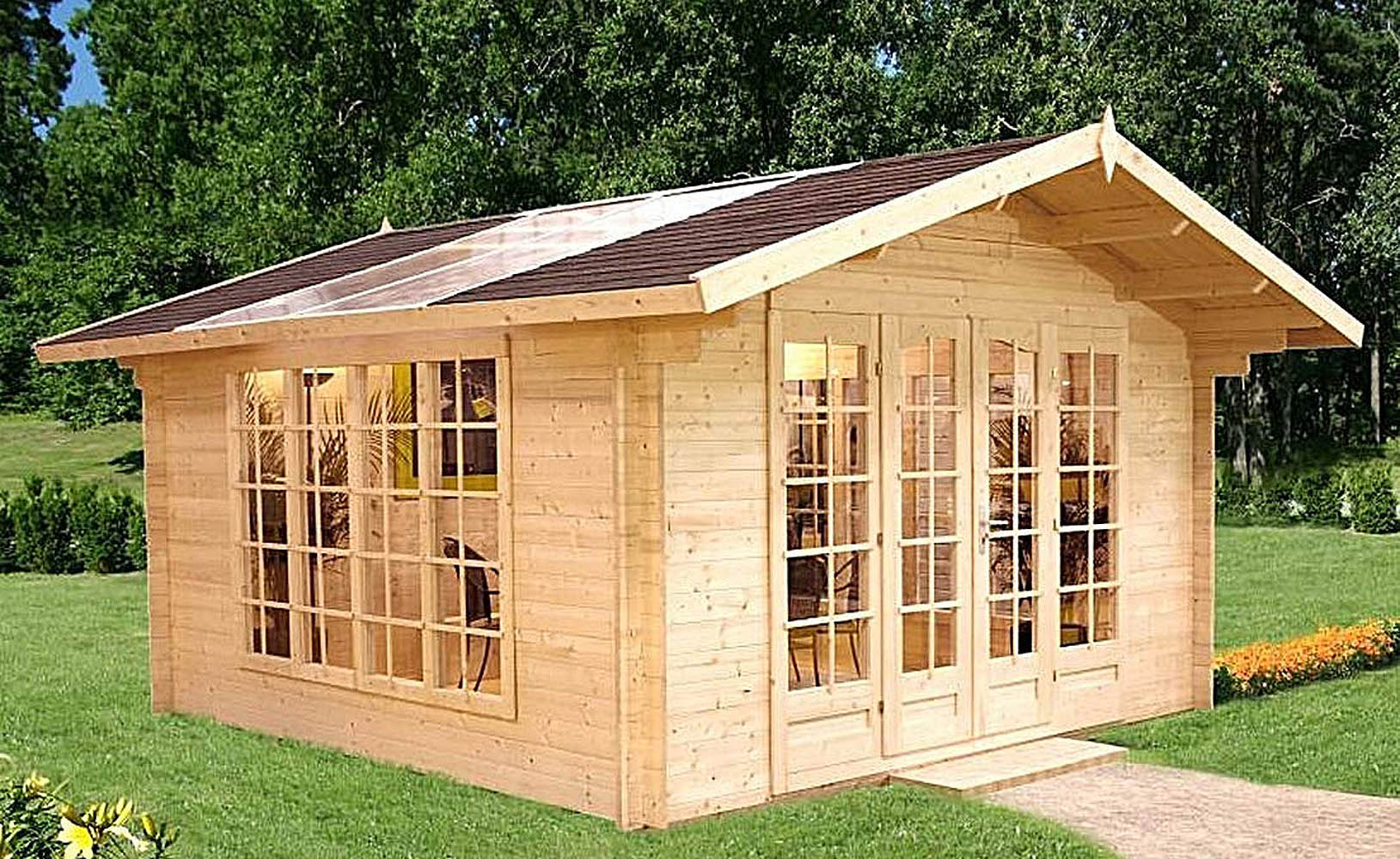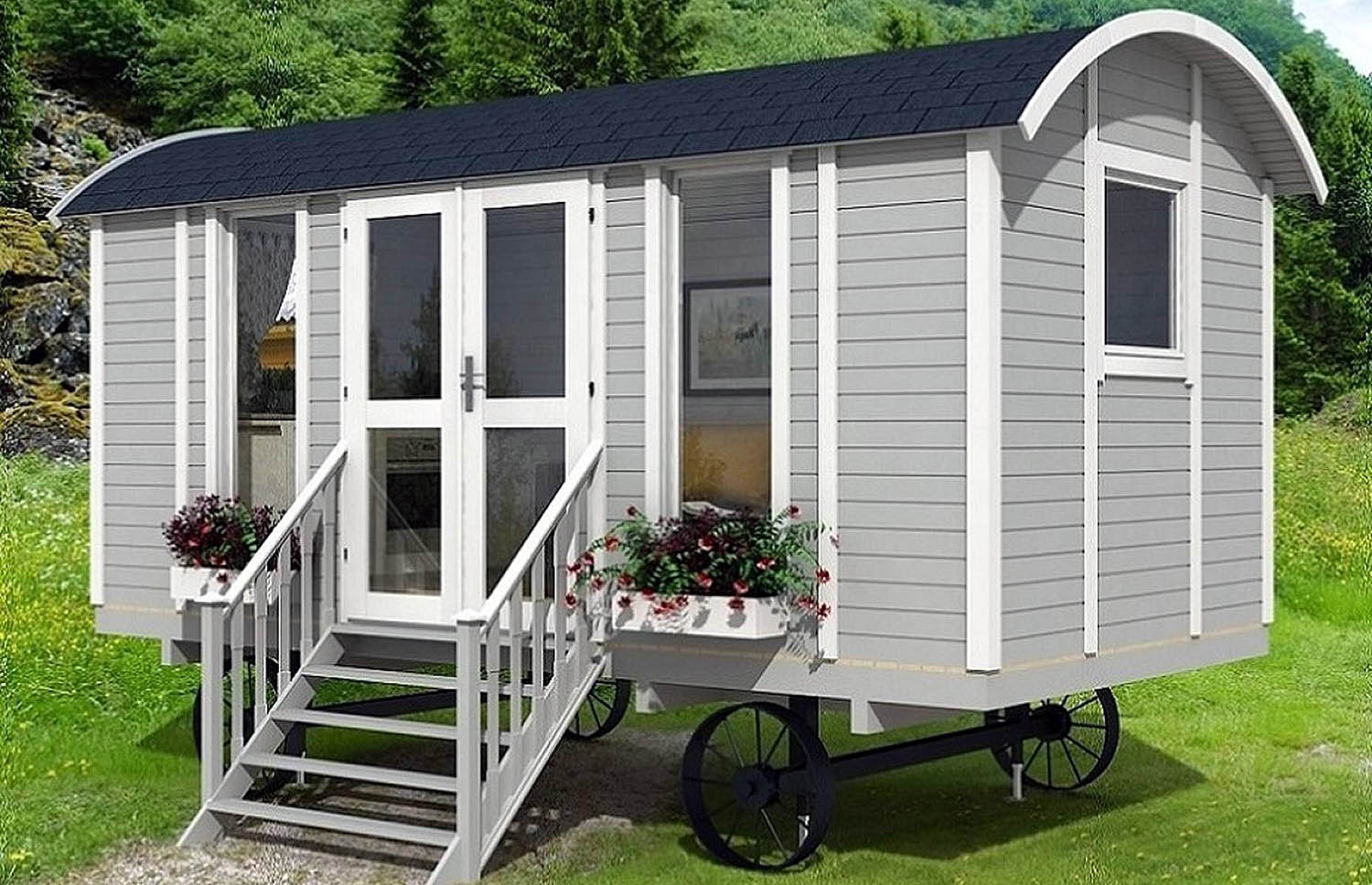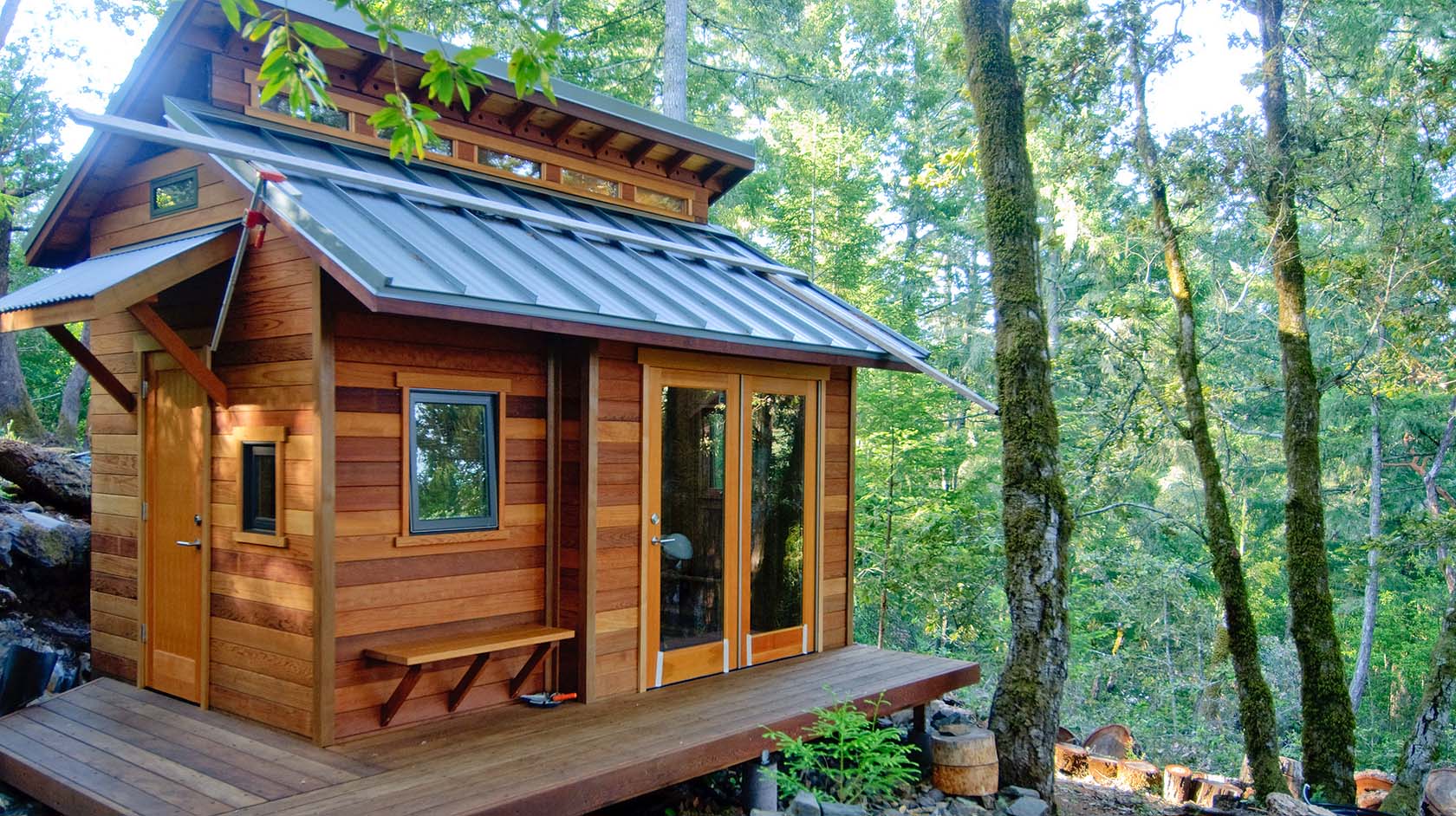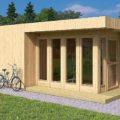The attraction to tiny cabins is on the rise in United States. People are realizing that owning a tiny cabin is affordable, convenient, and environmentally responsible. Contrary to times when owning a dream home meant a mansion with 4000 square feet or even more, the tides are now shifting in favor of smaller homes.
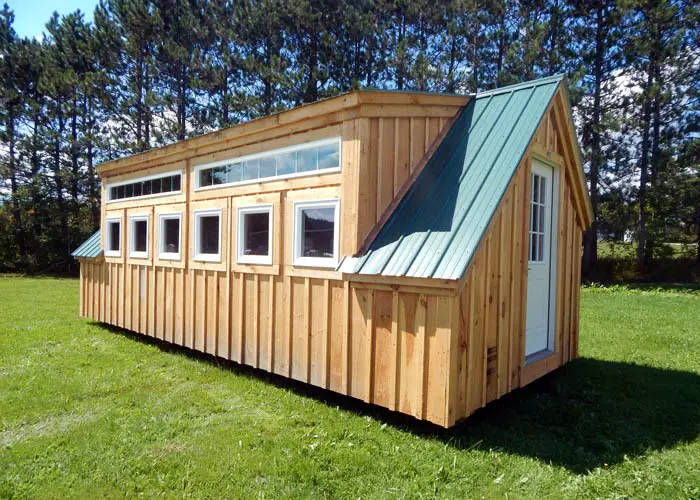
In most cases, these homes measure about 400 or even 100 square feet. During the financial crisis, many people took to their basements to start creating solutions for the world’s issues related to finance, job losses, economy, and poverty.
One of the solutions that builders came up with, were affordable, livable, tiny cabins. During and after this time, smaller houses came into the industry in much more of a boom than they ever had before.
After all, how much space does one truly need living simply, comfortably and to enjoy their homes and living spaces? Don’t most people just want to enjoy and spend more of their time outdoors when the weather is nice anyhow? The trend towards living in a smaller home is more than a passing fad. Below are a few reasons why.
Tiny Cabins Save Huge Money
Due to the small size, tiny cabins cost just a fraction of the cost of traditional homes. Costs range between $19,000 and $50,000 depending on the size and kind of finishes you want. The reason behind the house’s affordability is that you spend less on construction materials and the cost of manpower is also reduced.
The cost can be reduced further if you can design and build the house yourself. This means you will only buy construction materials, saving on labor and design costs. The low cost of tiny cabins means you can afford to pay cash or get a small loan.
These two options are better than the traditional mortgage loans homeowners are forced to take in order to finance a new home. Also, maintenance on a tiny cabin is cheaper than on traditional homes.
Environmentally Friendly
Natural building materials, wind and solar powered technologies are being used to build these tiny cabins environmentally friendly. You can use recycled, salvaged or even re-purposed materials. This saves a substantial amount of materials being outsourced from the natural environment. Using significantly less materials and self sustaining products, tiny cabins are kinder to the environment, leaving a smaller footprint.
Energy Efficient
Whether you connect your cabins to a power line or use solar power, the energy needs of a tiny cabins are much smaller compared to conventional homes. You will have smaller appliances that use small amount of power, meaning you’ll have a reduced electric bill. Additionally, the small size of the house means less power will be needed to heat and cool the air during the cold and hot seasons.
Easy to Relocate
Movable homes are more ideal for small families. One key characteristic of a conventional home is permanence, and in case you want to relocate then you’ll have to sell your home so that you can purchase a new one somewhere else.
In case you get a new job in a different state or city, you won’t have to worry if you’ve been living in a tiny cabin. All you’ll have to do is to lift the house on to a truck and drive it to that new place.
Mobility
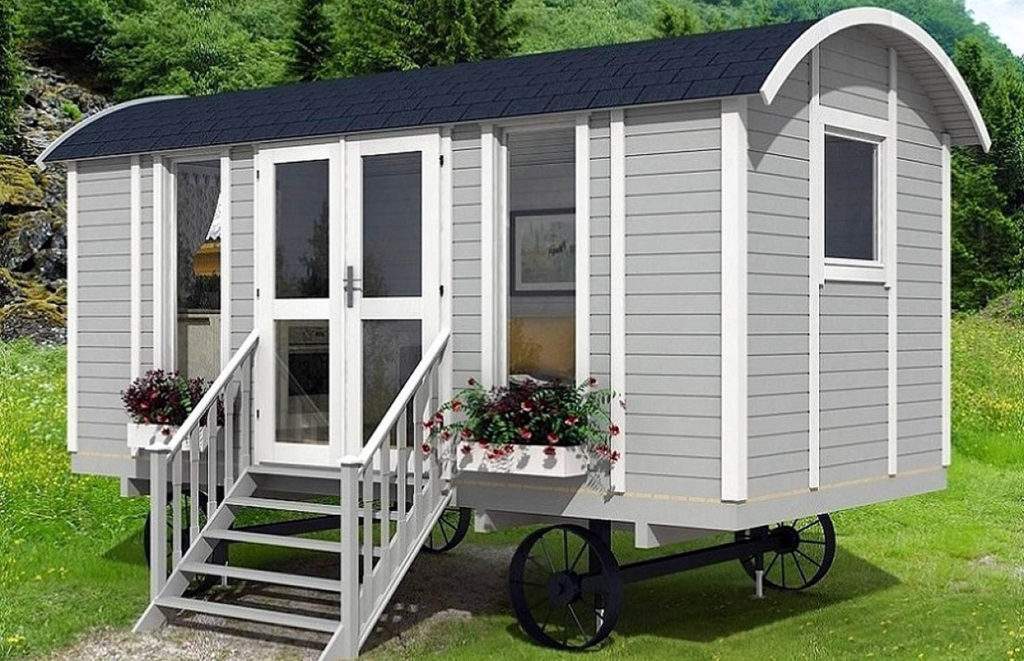
These cabins are build on a trailer for easy transportation. A structure or building fixed on the ground is subject to building codes. On the other hand, homes on trailers are not subject to building codes. This implies that you can construct a house depending on your needs since there are no codes to limit creativity as well as alternative designs.
Declutter To Live Simply
It is so freeing to purge and de-clutter. The burden of accumulated “stuff” is lifted, allowing a sense of freedom to just live and enjoy life. Living in a traditional home means you can pile up so many stuff, some important while others can be done away with. This means by moving to a tiny house you will either have to sell or donate less important items. Therefore, you’ll remain with what is really important to you.
Location
This can be the biggest obstacle for you. Before you buy or build a home, you need to know where you are going to keep it. Some of the places to keep it include in an RV park, especially if your home is build on wheels.
Plan For Utilities
If you are going to park your tiny cabin in an RV site, you are required to consider the availability of water, sewage disposal and access to electricity. However, if you construct one on your own land, you need to consider installing a septic tank and more.
Consider Your Goals And Objectives

What are your objectives and goals? Before you buy or build a home, you need to consider your objectives as well goals. The goals can vary from one person to the other. For instance, your objective may be strictly to save money.
It is prudent to consider the alternative that will save your more cash in the long run. This will help you to make an informed when it comes to choosing whether to purchase or construct a tiny cabin. All in all choose an option that is financially sound. When choosing a tiny cabin builder, it is also important to look at the functionality of the tiny cabin you want built.
Typically the benefits of a tiny cabin is the fact that you can have comfortable, homey shelter, warmth, access to modern amenities such as electricity and water, negate the need for a large mortgage, but also be able to be on wheels, moving from one beautiful area, to another.
How To Choose a Tiny Cabin Builder
A tiny cabin builder should be knowledgeable and aware of all of these benefits of owning a small house and be able to talk about these aspects at length, proving that they are knowledgeable in these areas.
Choosing a tiny cabin builder can be tricky, but another thing you can look for is whether or not the builder has some understanding of architecture and design. Since the builder will be working with so few materials, and the house may need to be moved around easily, design and thoughtfulness about shape and structure will be important.
Ask a few questions when choosing a tiny cabin builder about whether or not they know about the principles of organic design and architecture. If they don’t know about this, ask them a few more general questions about what they know about architecture for homes. This should give you a feel for how well they could conceptualize a plan or design for your tiny cabin and individualize it to your needs.
After these factors are looked into, some more practical elements need to be answered before you commit to a contract with the builder. These include: affordability, insulation, durability, reinforcement, high quality windows, easy transport, quality of materials, weight of the home, flexibility in building plans while building, indoor air quality, healthy chemical free building materials, high quality woods, and the use of chemical free insulators.
Great traits of a builder include honesty, their character, their values, their time frames, their communication style and skills, and their ability to convert your ideas into realities within their building plans and construction. When choosing a tiny cabin builder, it’s important to choose a builder who does not enjoy clutter and who can imagine a minimalist design so that their plans and designs will help you optimize the space in your home.
For example, a creative minimalist builder, will create cabinets that do not jut out far from the wall, and maximize the use of space in the tiny cabin as much as possible. They may also be great at building and recommending furniture that looks sleek, elegant, charming, modern, but also fits in well with the tiny cabin concept and use of space.
After these factors are looked into, some more practical elements need to be answered before you commit to a contract with the builder. These include: affordability, insulation, durability, reinforcement, high quality windows, easy transport, quality of materials, weight of the home, flexibility in building plans while building, indoor air quality, healthy chemical free building materials, high quality woods, and the use of chemical free insulators.
It’s important to get all the information when getting your tiny cabin built. There are so many products on the market, and it’s important to choose one that you will be happy with.
Living in a tiny cabin should be fun, enjoyable, inspiring, sustainable, and inspired by and connected to nature.


